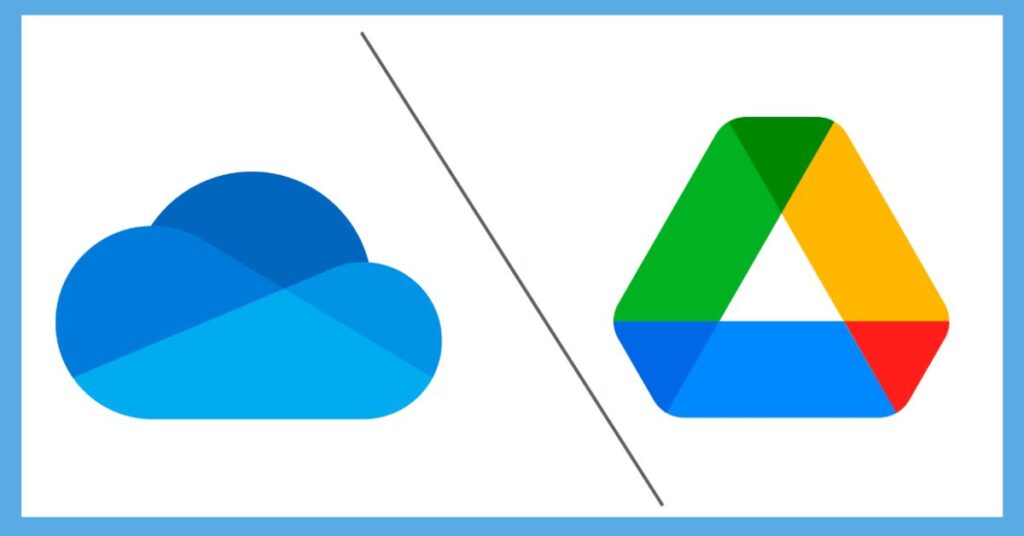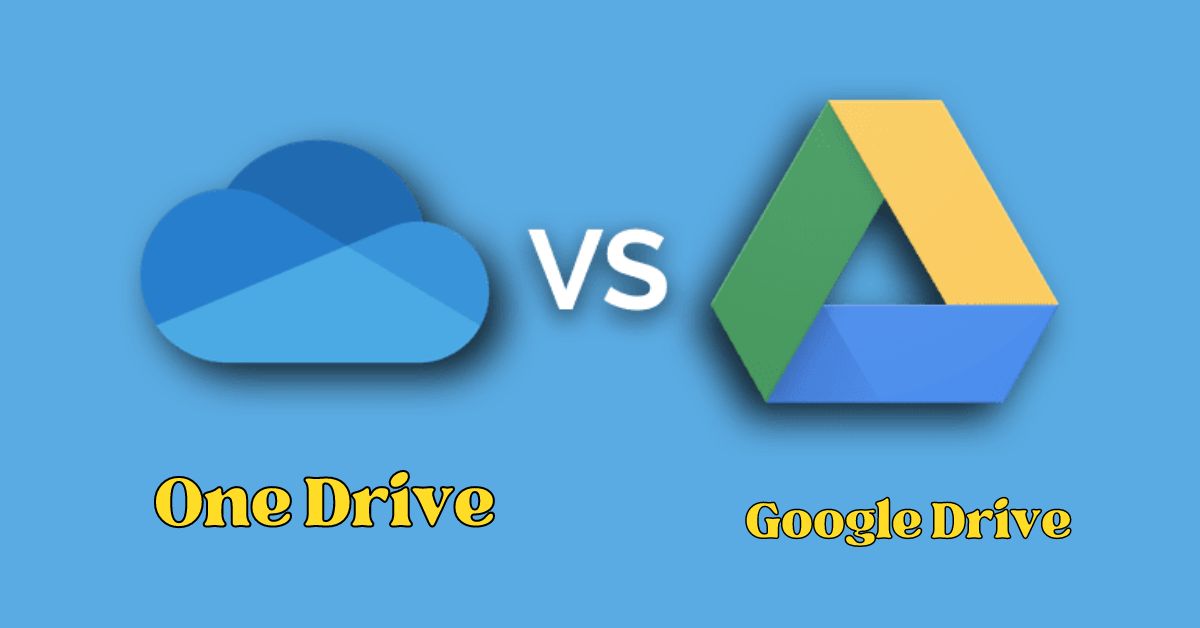In today’s digital age, cloud storage has become an indispensable tool for individuals and businesses alike. With the abundance of options available, two heavyweights stand out: One Drive vs Google Drive. Both offer an array of features, but which one reigns supreme? Let’s delve into the ultimate showdown between One Drive vs Google Drive to help you make an informed decision.
Introduction
With the rise of remote work and digital collaboration, cloud storage services have become indispensable. Among the plethora of options available, Microsoft’s OneDrive and Google’s Drive stand out as titans in the field. In this comprehensive comparison, we’ll dissect the features, pricing, accessibility, security, and more to determine which platform emerges victorious in the battle for cloud supremacy.
Pricing and Storage
OneDrive
OneDrive offers a variety of subscription plans tailored to individual and business needs. Personal users can opt for the free plan with 5 GB of storage or upgrade to the Microsoft 365 subscription, which includes 1 TB of storage along with access to Office apps.
Google Drive
Similarly, Google Drive provides users with 15 GB of free storage upon sign-up. For those requiring more storage, Google offers subscription plans starting with 100 GB and going up to multiple terabytes, all bundled with additional benefits such as access to Google Workspace.
Accessibility and Integration
OneDrive
As part of the Microsoft ecosystem, OneDrive seamlessly integrates with Windows, Office applications, and Outlook. This tight integration ensures effortless access to files across devices and streamlined collaboration within familiar environments.
Google Drive
Google Drive, deeply integrated with Gmail and Google Workspace, offers unparalleled accessibility across platforms. Its intuitive interface and robust API support enable users to effortlessly store, access, and share files from any device.
Collaboration and Sharing
OneDrive
OneDrive excels in collaboration, allowing real-time co-authoring of Office documents and seamless integration with Microsoft Teams. With advanced sharing options, users can control access levels and track file activity effortlessly.
Google Drive
Google Drive revolutionized collaboration with its real-time editing capabilities and intuitive sharing features. Users can collaborate on documents, spreadsheets, and presentations in real-time, with granular control over sharing permissions.
Security and Privacy
OneDrive
Microsoft prioritizes security and compliance, offering advanced encryption, multi-factor authentication, and data residency options. With built-in compliance features, OneDrive ensures that sensitive data remains protected at all times.
Google Drive
Google Drive employs robust security measures, including encryption at rest and in transit, proactive malware detection, and granular access controls. Additionally, Google provides users with transparency and control over their data through privacy settings.

File Management
OneDrive
OneDrive’s intuitive file management interface allows users to organize files and folders effortlessly. With features like version history and recycle bin recovery, users can manage their files efficiently while maintaining data integrity.
Google Drive
Google Drive offers powerful file management capabilities, including advanced search functionality, customizable organizational structures, and automated file organization through AI-driven features like Priority and Workspaces.
Offline Access
OneDrive
OneDrive provides seamless offline access to files through synchronization with local storage. Users can access and edit files offline, with changes automatically syncing when online connectivity is restored.
Google Drive
Similarly, Google Drive offers offline access through its desktop and mobile applications. Users can mark files for offline access, enabling uninterrupted productivity even without an internet connection.
Mobile Experience
OneDrive
OneDrive’s mobile app offers a seamless user experience, with intuitive navigation and robust file management features. Whether on iOS or Android, users can access, edit, and share files effortlessly on the go.
Google Drive
Google Drive’s mobile app provides a seamless experience across platforms, with features like offline access, file preview, and real-time collaboration. Its integration with other Google apps enhances productivity on mobile devices.
Customer Support
OneDrive
Microsoft offers comprehensive customer support for OneDrive users, including extensive documentation, community forums, and dedicated support channels for Microsoft 365 subscribers.
Google Drive
Google provides support for Google Drive users through its Help Center, community forums, and direct contact options for Google Workspace customers. Additionally, Google offers resources for administrators to manage organizational accounts effectively.
| Feature | OneDrive | Google Drive |
|---|---|---|
| Pricing | Free plan with 5 GB, Microsoft 365 subscription with 1 TB | Free plan with 15 GB, subscription plans with additional storage |
| Accessibility | Seamless integration with Microsoft ecosystem | Deep integration with Google Workspace |
| Collaboration | Real-time co-authoring, integration with Microsoft Teams | Real-time editing, intuitive sharing features |
| Security | Advanced encryption, multi-factor authentication | Encryption at rest and in transit, proactive malware detection |
| File Management | Intuitive interface, version history | Advanced search functionality, AI-driven file organization |
| Offline Access | Seamless synchronization, offline editing | Offline access through desktop and mobile apps |
| Mobile Experience | Intuitive mobile app with robust file management features | Seamless experience across platforms, integration with Google apps |
| Customer Support | Comprehensive support channels for Microsoft 365 subscribers | Help Center, community forums, direct contact options for Google Workspace users |
| Additional Features | Automatic photo and video backup, integration with third-party apps | AI-driven file suggestions, integration with Google Photos |
Additional Features
OneDrive
OneDrive offers additional features such as automatic photo and video backup, integration with third-party apps, and advanced search capabilities powered by Microsoft Graph.
Google Drive
Google Drive boasts additional features like AI-driven file suggestions, integration with Google Photos, and advanced collaboration tools through Google Workspace.
Performance
Both OneDrive and Google Drive offer reliable performance, with fast upload and download speeds, minimal downtime, and seamless synchronization across devices.
Conclusion
In the ultimate showdown between OneDrive and Google Drive, the choice ultimately boils down to personal preference and specific use cases. While OneDrive shines in integration with the Microsoft ecosystem and robust security features, Google Drive excels in collaboration, accessibility, and AI-driven productivity enhancements. Ultimately, users should evaluate their priorities and workflow requirements to determine which platform best suits their needs.
Is this article helpful? Keep reading our blog for more.
FAQs
1. Can I use both OneDrive and Google Drive simultaneously?
Yes, you can use both platforms simultaneously to leverage their respective features and benefits.
2. Are my files safe on OneDrive and Google Drive?
Both OneDrive and Google Drive employ robust security measures to protect user data, including encryption, access controls, and proactive threat detection.
3. Can I collaborate with others on documents stored in OneDrive and Google Drive?
Yes, both platforms offer real-time collaboration features, allowing multiple users to edit documents simultaneously and track changes effortlessly.
4. Can I access OneDrive vs Google Drive offline?
Yes, both platforms offer offline access through their respective desktop and mobile applications, enabling users to work on files without an internet connection.
5. How do I choose between OneDrive and Google Drive?
Consider your specific needs regarding integration, collaboration, security, and additional features to determine which platform aligns best with your requirements.











